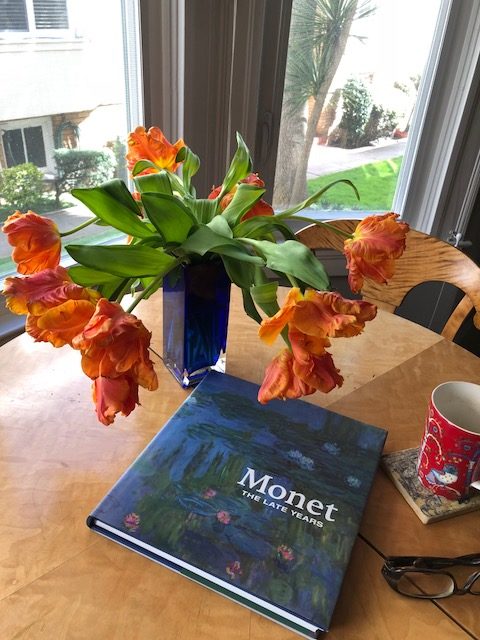| While one could hardly describe Claude Monet as a late bloomer (he was one of those rare painters who had won widespread recognition in youth), his work in “the late years” is now being celebrated again in a stunning exhibition at San Francisco’s DeYoung Museum.
In the later years of his life, Monet (1840–1926) stayed close to home, turning to his extraordinary garden at Giverny for inspiration. Those of you planning on seeing this show before it closes on May 27, are well advised to purchase this before going: Monet: The Late Years Catalogue: Hardcover, 208 pages. $50 value. This book demonstrates how the garden became a laboratory for the artist’s concentrated study of natural phenomena—and for a revolutionary shift in the appearance and execution of his paintings. The well-produced publication also examines the last phase of Monet’s career, beginning in 1913, bringing together approximately 60 of his greatest works from this period. More specifically, Monet: The Late Years focuses on the series that Monet invented and reinvented at Giverny, reevaluating many large-scale works that have long been considered preparatory studies, reexamining their relationship to and status as finished works. Essays by a roster of distinguished scholars address topics such as Monet’s plans for displaying his late paintings, the mechanics of his painting technique, and the critical and market reception of these works. Through this visually stunning reassessment, Monet’s late works, still astonishing a century later, recast the titan of Impressionism as a radical modern painter.
|

